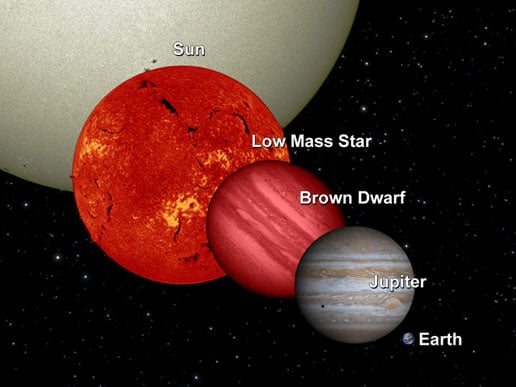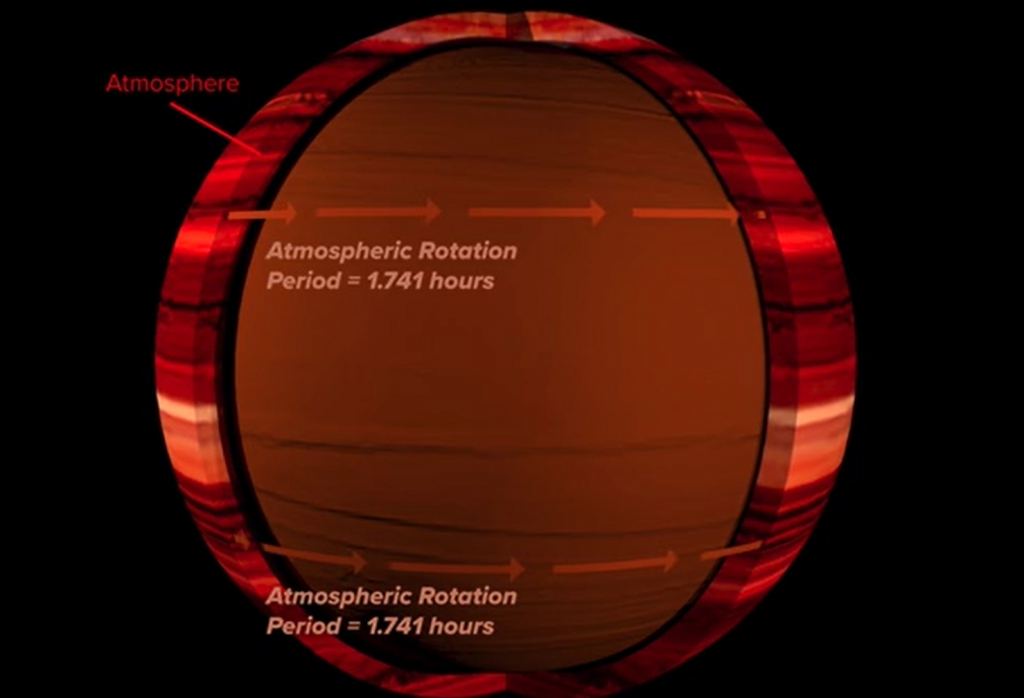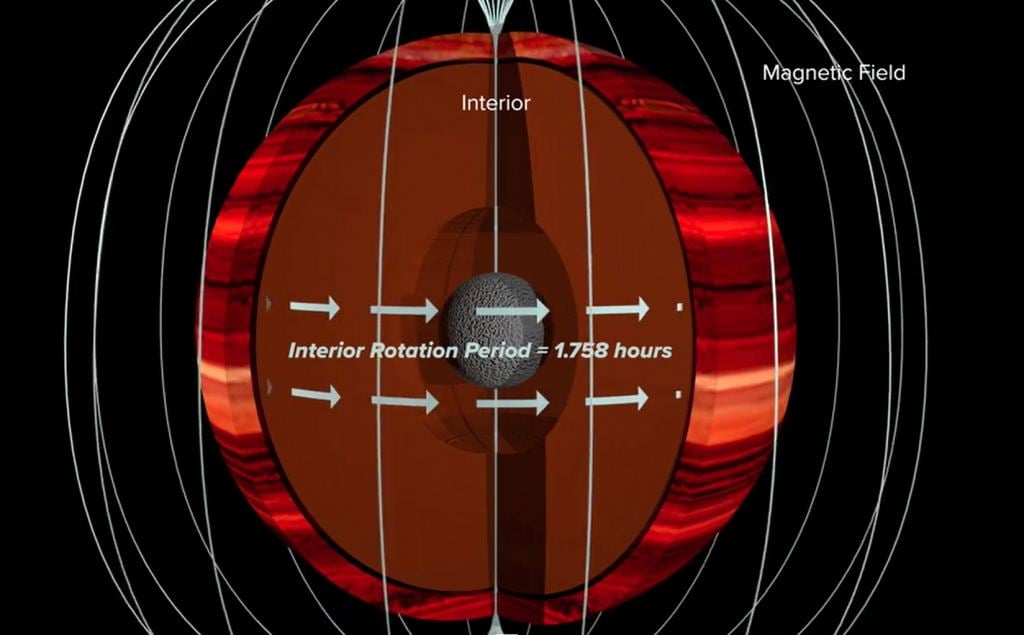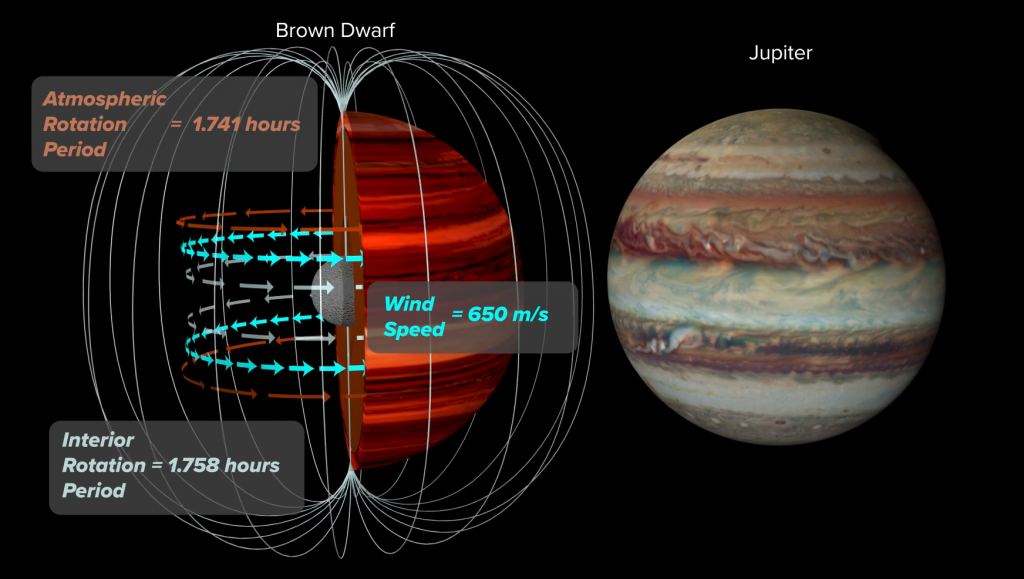In some ways, brown dwarfs are nature's stellar oddballs. A lot of stars exhibit strange behaviour at different times in their evolution. But brown dwarfs aren't even certain that they're stars at all.
But that doesn't mean astronomers don't want to study and understand them.
Brown dwarfs occupy a niche in the Universe. They're more massive than the largest gas giants, (which themselves are sometimes referred to as "failed stars" because they never acquired enough mass to ignite fusion.) But brown dwarfs are also smaller than the least massive stars.
So they sort of sit in this happy—or unhappy—place. Unlike their stellar counterparts on the main sequence, brown dwarfs aren't massive enough to fuse hydrogen, or even helium. But they might fuse deuterium, and even lithium. Research from 2017 shows that they're plentiful, and there may be as many brown dwarfs as there are other stars. So astronomers study them, and want to unravel their secrets.
Recently, an international team of researchers set out to study the brown dwarf 2MASS J1047+21. It's 33 light years away from Earth, making it one of the closest brown dwarfs. The team wanted to measure the dwarf's wind speed, and to do that, they invented a novel technique.
"For the first time ever, we measured the speed of the winds of a brown dwarf—too big to be a planet, too small to be a star." Peter K.G. Williams, Center for Astrophysics and American Astronomical Society
On April 9th, the team, which included scientists at the Center for Astrophysics at Harvard and the Smithsonian, announced the first-ever wind speed measurement for a body outside our Solar System. They clocked the wind speed on 2MASS J1047+21 at 650 meters per second, or 1,450 miles per hour. For comparison, a Category 5 hurricane has wind speeds of 252 kmh (157 mph) or higher.
"For the first time ever, we measured the speed of the winds of a brown dwarf—too big to be a planet, too small to be a star," said Peter K.G. Williams, Innovation Scientist for CfA and the American Astronomical Society, in a press release. Williams led the observations that allowed the team to measure the wind speed.
And according to Williams, this successful test of a new way of measuring wind speeds will lead to better results in the future. "The results rule out a few unusual models and prove that this new technique works and can be applied to more objects," Williams said.
The technique uses the observation of radio waves combined with infrared emissions. It allows astronomers to study wind speeds on bodies so far away that cloud movements in the atmospheres are not discernible.
Williams says that even though brown dwarfs are actually covered in clouds, there's no way we can observe them to find wind speeds. "Even though brown dwarfs are completely covered in clouds, they're too far away for us to pick out individual clouds like we do on planets within our solar system, but we can still measure how long it takes for a group of clouds to do a lap around the atmosphere; as clouds come in and out of view they change the brightness of the planet," said Williams. "This lap time depends on two things: how fast the brown dwarf itself is spinning, and how fast the wind is blowing on top of that."
Therein lies the key: the rotational speed of the dwarf itself, and the rotational speed of its clouds.
The infrared emissions tell the scientists the rotation speed of the clouds. Then, the radio waves tell them the speed of the brown dwarf itself, down inside the atmosphere.
"It turns out that in some brown dwarfs it's possible to measure this spin rate by detecting radio waves," said Williams. "We observed a pulse of radio waves every time the brown dwarf rotated. This is because the radio waves come from high-energy particles trapped in its magnetic field, and its magnetic field is rooted deep in its interior—just like Earth—where there's no wind to alter the measurement."
Once the scientists detected the rotation speed of the clouds, and then the rotation speed of the brown dwarf, the rest was math.
"By taking the difference between the cloud lap time and the radio pulse time, we were able to determine the wind speed," explained Williams.
Up until now, there were many theories on brown dwarf atmospheres, and this work will eliminate some of them. According to Williams, this study will also provide important constraints on any future theories regarding brown dwarf atmospheres. It'll also provide some guidance for theories on exoplanet atmospheres as well.
The team published their results in a new paper titled " A measurement of the wind speed on a brown dwarf. " It's published the journal Science. Lead author is Katelyn N. Allers, Associate Professor of Physics and Astronomy at Bucknell University.
 Universe Today
Universe Today




